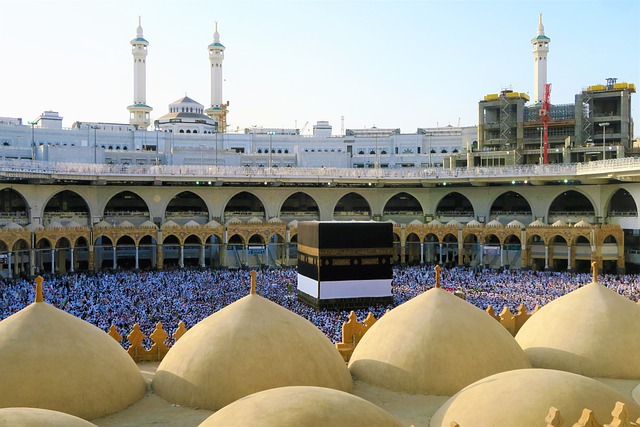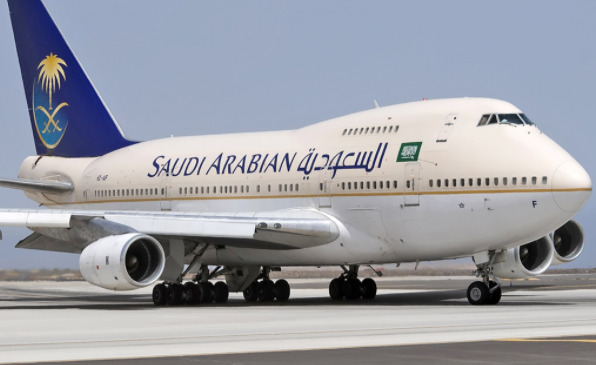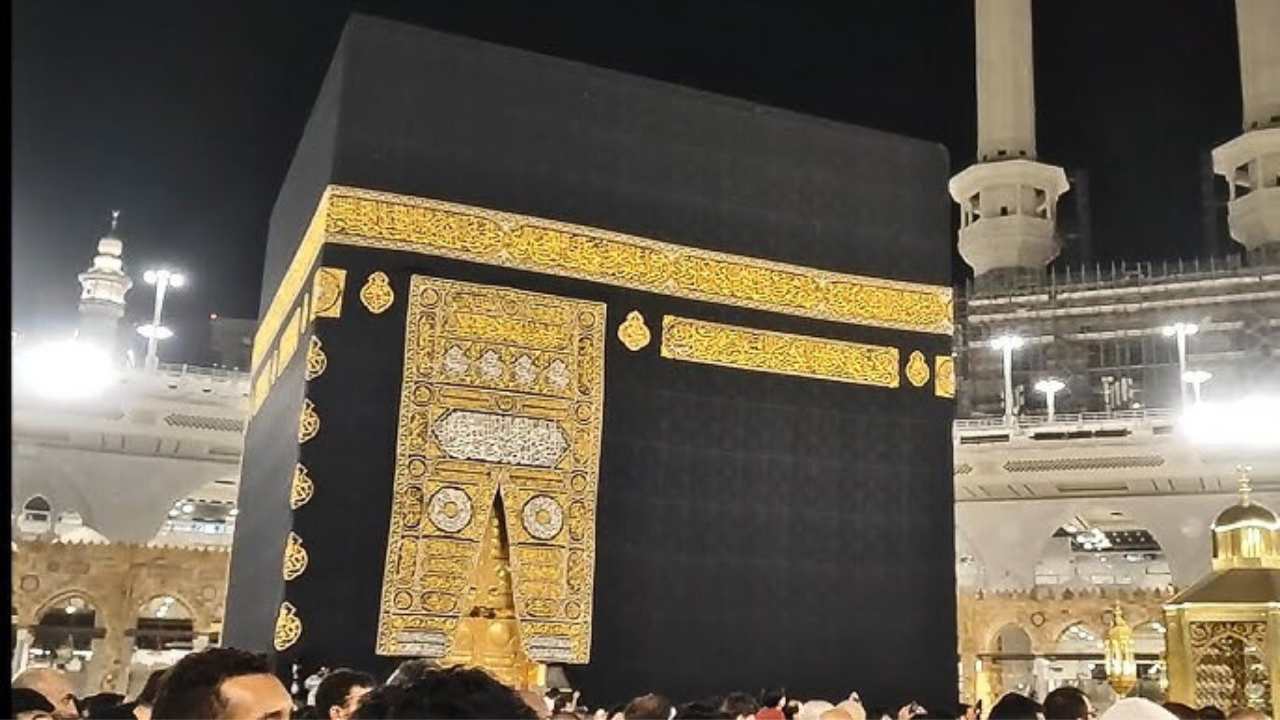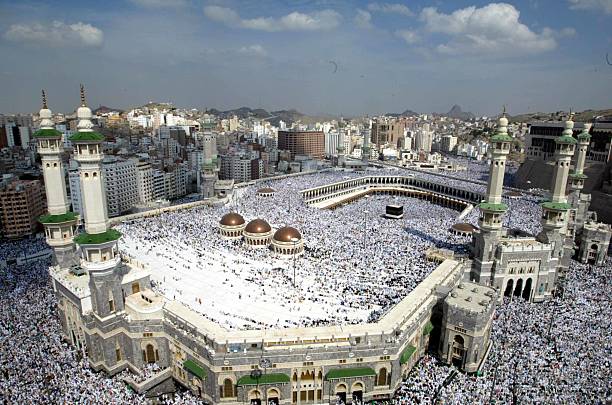Steps and Stages of Hajj to Must Follow
Since 629 CE, billions of muslims worldwide have been participating in the hajj pilgrimage annually, in honor of prophet Muhammad’s (SAW) migration from Madinah to Makkah. For those getting ready to embark on the journey, it is a time filled with thrill and anticipation, yet also a time of great spirituality, seriousness, and significance in our lives.
The term "istitaah" refers to the requirement of being both financially and physically able to undertake the hajj pilgrimage with those who complete the journey being known as "hajji" or "mustati."
In Quran, Allah (SWT) states, “Call all people to the pilgrimage. They will come to you on foot and on every lean camel from every distant path.” (22:27) The hajj rituals span five, beginning on the 8th Dhul hijjah and ending on the 12th of the same month. Hajj is the largest annual religious assembly in Islam.Simply put as "to intent a journey," the seven stages of Hajj are:
7 Stages of hajj for First Time Traveler
Step 1: wearing the ihram clothing and making the intentions
Step 2: Mina also known as the “City of tents”
Step 3: Mina to Arafat (9th day of dhul hijjah)
Step 4: Muzdalifah
Step 5: Rami, which is the act of stoning the devil
Step 6: Nahr
Step 7: Tawaf of farewell
Step 1: Ihram and intentions
Having a sincere intentions and putting on the ihram are the initial crucial actions when preparing for Hajj. Upon making the intentions, Muslim pilgrims should don the ihram, consisting of two unstitched white fabric for men and a loose fitting abaya for women, ensuring full body coverage.
It is advised for the pilgrim to don the ihram before entering Miqat on Dhul hijjah- the outer boundaries of Makkah. The five designated points for pilgrims to enter Miqats are following:
Abbyar Ali (Dhul Hulaifah) is where pilgrims from Madinah or Saudi Arabia begin their hajj journey. They are recommended to carry out hajj al-Tamattu.
(Al-Sail Al-Kabeer) Qarn-al Manzil is the designated point of Miqat for pilgrims arriving from Taif or Najd.
Al-Juhfah, situated close to Rabigh, serves as the designated Miqat for pilgrims traveling to or from Egypt, Syria, and Morocco.
Dhat’Irq is the designated location for pilgrims from or passing through Iraq to begin their pilgrimage.
Sa’adiyah (Yalamlam) serves as the designed Miqat for pilgrims arriving from Yemen, India, or Pakistan.
Additionally, while in ihram, pilgrims are recommendin anyed to recite Talbiyah and avoid engaging sinful behavior. The Talbiyah must be chanted loudly: Labbayka Allahumma Labbayk. Labbayka La Sharika Laka Labbayk. Innal Hamda Wan-ni’mata laka Wal-mulk. La Sharika Lak.
“At your service, Allah, at Your service. At Your service, You have no partner, at Your service.
Truly all praise, favor and sovereignty are Yours. You have no partner.” Upon reaching Makkah, Muslims planning to complete Hajj Al tamattu should merge the practices of Umrah and Hajj. In order to do this, Muslims circumambulate the holy Kaaba 7 times in a counterclockwise direction, which is also called Tawaf.
After that, they do the Tawaf prayer near the Muqam Ibrahim and continue with Umrah by running between Safa and Marwah Hills. After finishing the Umrah, pilgrims begin their trip to Mina.
Step 2: Mina also known as “City of tents”
Located just 5 to 6 km away from Makkah, Mina is a petite town. Upon reaching the tent city of Mina, pilgrims are instructed to stay and rest until the next day. Pilgrims recite all five Salahs, starting from Zohar prayer and ending with Fajr prayer, while staying in Mina.
Today, the area of Mina consists of contemporary tents that have all the necessary facilities. Muslims are required to perform both obligatory and voluntary prayers while in Mina.
Step 3: Mina to Arafat (9th day of dhul hijjah)
On 9th of Dhul hijjah, during the morning of the second day of Hajj, pilgrims begin their journey towards Arafat chanting Talbiyah loudly. Muslim pilgrims perform Zuhrain prayer, which is a blend of Zohar and Asr prayers, along with Qasar prayer when they arrive at the mount of Arafat.
This is called Wuquf, standing before Allah (SWT) - and takes place from noon to sunset near Jabal al- Rahmah.
Positioned 14.4 km away from Mina, Mount Mercy also known as Jabal al-Rahmah on the Arafat plains was where the prophet Mohammed (SAW) delivered a portion of his last sermon.
Step 4: Muzdalifah
The pilgrims will next visit Muzdalifah on their group or family hajj journey, a small town situated between mina and mount Arafat. Upon reaching Muzdalifah at sunset, the pilgrims perform combined prayers of Maghrib and Isha in a prayer called Maghribaen. Muslims stays outdoors overnight and gather 49 equal sized pebbles for the ritual of Rami (stoning the devil). Depart from Muzdalifah town in the morning of the 10th Dhul hijjah.
Step 5: Rami
After that, Muslims return to Mina to complete the rituals of Rami, Nahr, and Halq. Upon reaching Mina, pilgrims engage in the ritual of Rami by throwing pebbles at the Jamarat al-Aqabah. Seven stones are hurled towards the pillar formation. The stoning of the Jamarat is carried out to commemorate prophet Ibrahim (AS) resisting the devil's attempt to dissuade him from obeying Allah’s (SWT) command.
Responding, prophet Ibrahim (AS) cast little stones towards the devil. Rami is required to be conducted daily at noon. The act of Rami continues for 3 days – 10th, 11th, and 12th of dhul hijjah.
Step 6: Nahr
After finishing the rites of Hajj on the 10th of Dhul-Hijjah, pilgrims then required to make a sacrificial offering of an animal (lamb or camel). Pilgrims have the option to buy either sacrifice coupons or vouchers that confirm the sacrifice was done for them. The needy should receive the meat of the animal that has been sacrificed.
Halq and Taqsir
Halq refers to cutting off all the hairs on the head, while Taqsir means trimming or cutting the hair shorter. After completing the holy rituals, men either shave their heads or trim their hairs, while women trim their hair the length of a fingertip. Halq and Taqsir represent a Muslim's total dedication to Allah (SWT) and disconnection from materialistic distractions. Following this, pilgrims remove their ihram.
After everything is finished, they return to their campground in Mina.
Step 7: farewell Tawaf
The pilgrims will spend the next two days in Mina (11th and 12th Dhul hijjah) after successfully completing this task. Each day, they will continue the symbolic stoning of the devil by throwing seven pebbles at each of the three pillars.
After completing their stay in Mina, upon finishing the ceremony, worshippers go back to the holy Kaaba in Makkah to do the “Tawaf al-Wada,” or the “farewell tawaf,” along with Sa’i. While this signifies the conclusion of hajj, numerous pilgrims also stop by Madinah before returning home.





